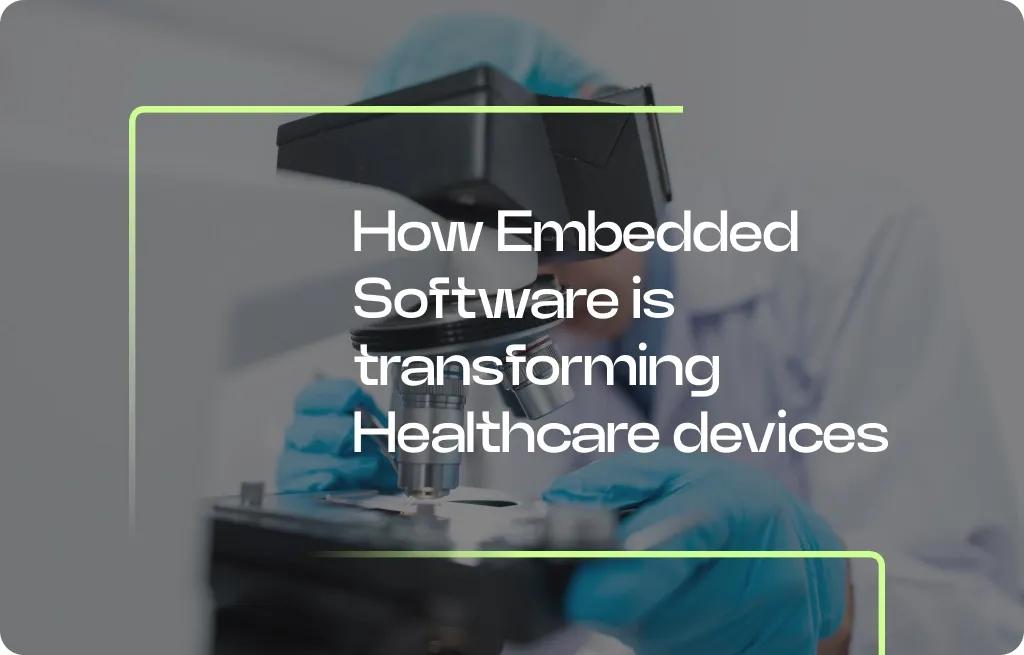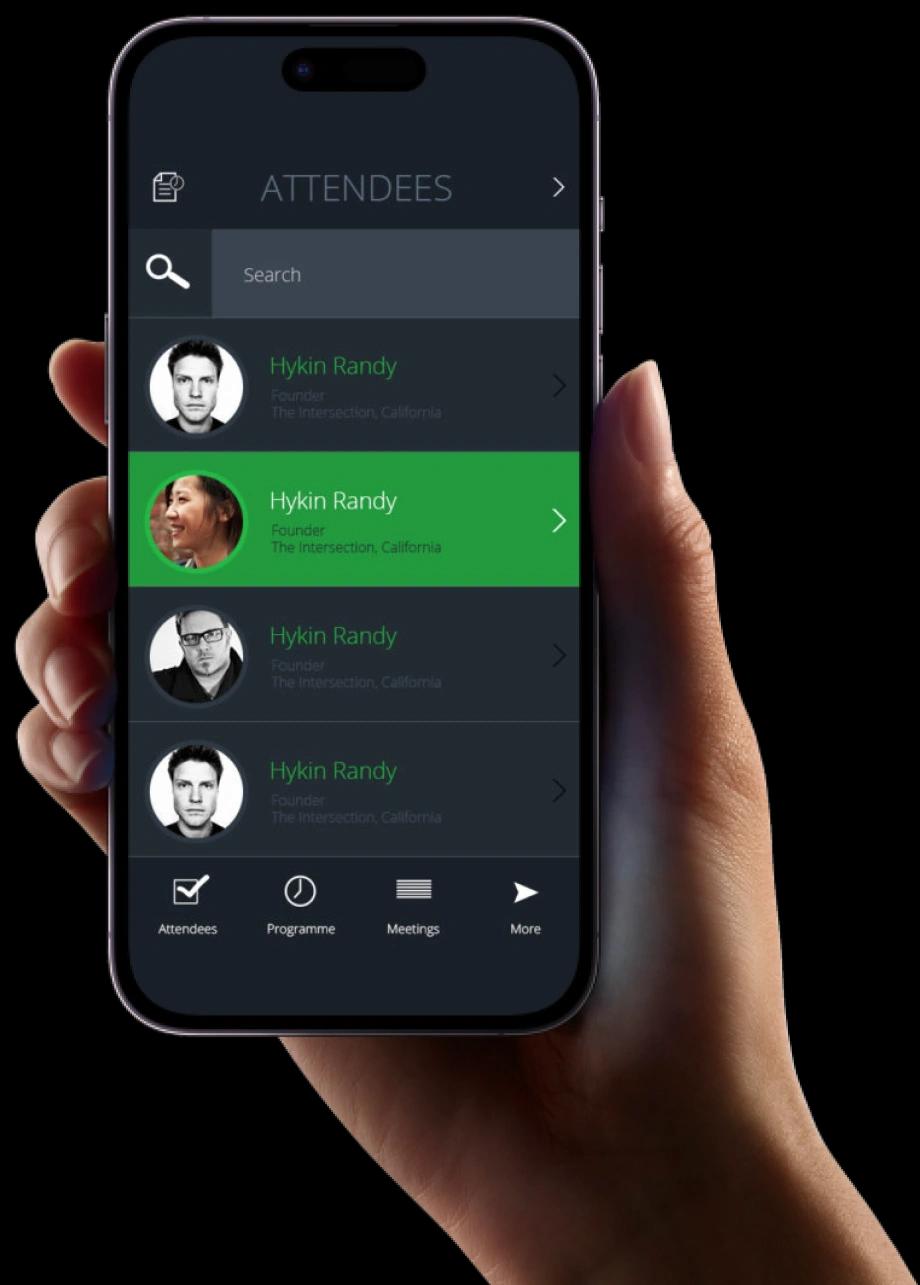Exaud Blog
Blog

How Embedded Software Solutions are revolutionizing Healthcare devices
Learn how embedded software powers modern healthcare technology, enabling smarter, safer, and more efficient medical devices.Posted onby ExaudBehind every modern medical device, there’s software quietly doing the heavy lifting. From monitoring a patient’s heartbeat to interpreting complex imaging data, embedded software has become the invisible core of healthcare technology. It’s what enables medical devices to operate with precision, communicate with other systems, and support doctors in making faster and more accurate decisions.
Rather than being an add-on, embedded software is now what defines how healthcare technology works, making devices smarter, safer, and more reliable. In this article, we examine how these systems are revolutionizing the healthcare industry, the benefits they offer, and the challenges developers encounter when designing and implementing them.
What is Embedded Software in Healthcare?
Embedded software is a specialized computer program designed to run on embedded systems within medical devices. These systems are integrated into devices such as patient monitors, insulin pumps, medical imaging systems, and wearable health trackers. Embedded software ensures that these devices perform specific tasks, such as processing sensor data, controlling devices, and communicating with other systems, all in real-time.
In healthcare, embedded software is crucial for ensuring that medical devices are accurate, reliable, and compliant with stringent regulations. This type of software is embedded within the device hardware and is tailored to meet the specific needs of the medical application, ensuring optimal performance and user safety.
How Embedded Software is Revolutionizing Healthcare Devices
Enabling Real-Time Data Processing and Monitoring
One of the key advantages of embedded software in healthcare devices is the ability to process data in real time. Medical devices, such as heart rate monitors or continuous glucose monitors, rely on embedded software to collect and analyze data. This enables healthcare providers to make informed decisions based on up-to-date patient information. For instance, implantable devices like pacemakers use embedded software to monitor heart rhythms in real time and make adjustments to maintain a steady heartbeat. This real-time processing capability enhances the overall functionality and reliability of healthcare devices, improving patient outcomes.
Improving Diagnostic Accuracy
Embedded software is transforming diagnostic devices by enabling higher accuracy and faster results. Medical imaging equipment, such as X-ray machines, MRI scanners, and ultrasound devices, rely on embedded systems to process images and provide accurate diagnostic results. The advanced algorithms embedded in these devices can detect anomalies in images that might be missed by the human eye, leading to early detection of diseases such as cancer. In addition, devices like diagnostic test kits use embedded software to analyze samples and produce faster, more accurate results, which can significantly reduce diagnostic errors and improve patient care.
Enhancing Device Integration and Connectivity
Modern healthcare is becoming increasingly connected, and embedded software plays a critical role in enabling seamless device integration. Medical devices now communicate with other devices and hospital systems to share patient data and synchronize treatments. For example, smart infusion pumps can integrate with electronic health records (EHR) to ensure that the correct medication and dosage are administered to the patient. Additionally, embedded software enables remote monitoring capabilities, allowing healthcare professionals to monitor patients' health from a distance. Wearable devices, such as smartwatches and health trackers, use embedded software to continuously monitor vital signs and send data to healthcare providers in real time, enabling proactive care.
Ensuring Compliance with Health Standards and Regulations
Healthcare devices must comply with strict regulations to ensure safety and efficacy. Custom Embedded software solutions are developed to meet these regulatory standards, such as FDA (Food and Drug Administration) approvals and CE marking in Europe. The software ensures that devices function as intended, meet performance standards, and protect patient data in compliance with regulations such as HIPAA (Health Insurance Portability and Accountability Act) and GDPR (General Data Protection Regulation). By incorporating compliance features into the embedded software, medical device manufacturers can ensure that their devices meet the highest standards of safety and performance, reducing the risk of legal issues and patient harm.
Key Benefits of Embedded Software in Healthcare Devices
1. Improved Patient Outcomes: Embedded software enhances the functionality of healthcare devices, leading to improved patient care and outcomes. By enabling real-time data processing, predictive analytics, and accurate diagnostics, these solutions help healthcare professionals make better decisions, reduce errors, and deliver more personalized care. For example, personalized insulin delivery systems use embedded software to monitor blood glucose levels and adjust insulin delivery in real time, improving diabetes management and reducing the risk of complications.
2. Increased Efficiency and Cost Reduction: Embedded software can significantly reduce operational costs by automating tasks and optimizing device performance. For instance, automated diagnostic systems can process patient data faster than manual methods, reducing wait times and improving the overall efficiency of healthcare providers. Moreover, remote monitoring capabilities enabled by embedded software allow healthcare professionals to track patients from a distance, reducing hospital admissions and in-person visits, ultimately lowering healthcare costs.
3. Enhanced Device Security: As healthcare devices become more connected, security becomes an essential concern. Embedded software solutions are designed with advanced security protocols to protect sensitive patient data from cyber threats. Encryption, authentication, and secure communication channels are built into the software to safeguard patient information and ensure that devices are secure from unauthorized access.
Challenges in Embedded Software Development for Healthcare
While embedded software offers numerous advantages, there are challenges to consider in the development and deployment of these systems:
1. Data Privacy and Security: Healthcare devices handle highly sensitive patient data, making them prime targets for cyberattacks. Ensuring that embedded software is secure and compliant with data protection regulations is critical. Manufacturers must implement robust security measures to protect patient data from cyber threats.
2. Integration with Existing Systems: Integrating embedded systems into existing hospital infrastructure can be complex. Many healthcare institutions rely on legacy systems, and ensuring compatibility with newer devices and software can require significant development work. Proper integration is crucial to ensure that data flows seamlessly between devices and hospital systems.
3. Regulatory Compliance: Healthcare devices must meet stringent regulatory requirements, which can vary by region and product type. Custom embedded software must be developed with compliance in mind, ensuring that all features meet FDA, CE, and other regulatory standards for safety, efficacy, and privacy.
Best Practices for Implementing Embedded Software Solutions in Healthcare Devices
Prioritize Security and Privacy
Healthcare devices must be secure to protect patient data. When implementing embedded software solutions, prioritize data encryption, authentication, and regular security updates to ensure that devices are safe from hacking and unauthorized access.
Work with Experienced Developers
Developing embedded software for healthcare devices requires specialized knowledge. Partnering with experienced developers who understand the nuances of healthcare regulations and device requirements is essential for success.
Focus on Interoperability
When designing embedded software, prioritize interoperability, ensuring that your devices can integrate with hospital IT systems, EHRs, and other healthcare infrastructure.
Embedded software solutions improve performance, reliability, and patient care. From real-time data processing to seamless integration with other systems, these solutions are transforming the way healthcare is delivered. By tailoring embedded software to the specific needs of healthcare applications, businesses can ensure that their devices are safe, efficient, and effective.
Faqs about Embedded Software in healthcare
What types of healthcare devices use embedded software?
Embedded software is present in nearly every modern medical device. From small wearable health trackers that measure heart rate and oxygen levels to complex imaging equipment such as MRI and CT scanners, embedded systems make it possible for devices to collect, process, and transmit medical data accurately.
Implantable devices like pacemakers and neurostimulators rely on embedded software to monitor vital signs and adjust therapy in real time, ensuring continuous and reliable performance without human intervention. Even diagnostic tools such as blood analyzers, infusion pumps, and portable ultrasound machines depend on embedded systems to maintain precision and compliance with healthcare standards.
In essence, any device that measures, calculates, or communicates health data now depends on embedded software to function efficiently, safely, and consistently across medical environments.
How does embedded software improve patient care?
Embedded software enhances patient care by enabling real-time monitoring, faster diagnostics, and greater personalization of treatments. Devices equipped with advanced software can continuously analyze patient data, alert clinicians to potential risks, and even adjust treatments automatically, often before symptoms become critical.
For example, wearable ECG monitors can detect irregular heart rhythms and immediately send alerts to healthcare providers, while smart insulin pumps can calculate dosage adjustments on the fly. This level of automation not only reduces the chance of human error but also ensures that interventions happen at the right time.
Moreover, embedded systems help medical staff make better-informed decisions by providing them with accurate, real-time data visualizations and predictive insights. This shift from reactive to proactive care represents one of the most transformative impacts of embedded technology on modern healthcare.
What are the main regulatory challenges in developing embedded healthcare software?
Developing embedded software for healthcare is subject to rigorous regulatory frameworks that vary by region and device type. In the US, for example, the FDA requires comprehensive validation, documentation, and ongoing post-market surveillance to ensure device safety and effectiveness. In Europe, devices must comply with the Medical Device Regulation (MDR) and often require CE marking to be commercialized.
Developers must also adhere to software-specific standards such as IEC 62304, which governs the software development lifecycle for medical devices. This involves strict version control, verification testing, and detailed risk management processes to ensure reliability and patient safety.
Additionally, data privacy laws like HIPAA in the US and GDPR in Europe impose strict conditions on how patient information is collected, processed, and stored. Failing to meet these standards can lead not only to legal consequences but also to loss of trust and potential harm to patients.
Can legacy healthcare systems integrate with new embedded devices?
Yes, but integration with legacy healthcare systems is one of the most technically challenging aspects of implementing new embedded devices. Many hospitals and clinics still operate on outdated IT infrastructures that were never designed for connected, data-driven technologies. As a result, new devices must be built with compatibility and interoperability in mind from the outset.
Modern embedded systems use standardized communication protocols and APIs (such as HL7 and FHIR) to facilitate seamless data exchange between devices and hospital information systems. This ensures that patient information flows correctly across platforms without duplication or data loss.
When done correctly, integration allows healthcare providers to view consolidated patient data in real time, improve collaboration between departments, and enhance continuity of care. However, it often requires phased deployment, robust testing, and close collaboration between software developers, hospital IT teams, and medical staff.
If you're looking to integrate embedded software into your healthcare devices or need expert guidance in developing custom systems, contact our team today and let's connect!
Related Posts
Subscribe for Authentic Insights & Updates
We're not here to fill your inbox with generic tech news. Our newsletter delivers genuine insights from our team, along with the latest company updates.